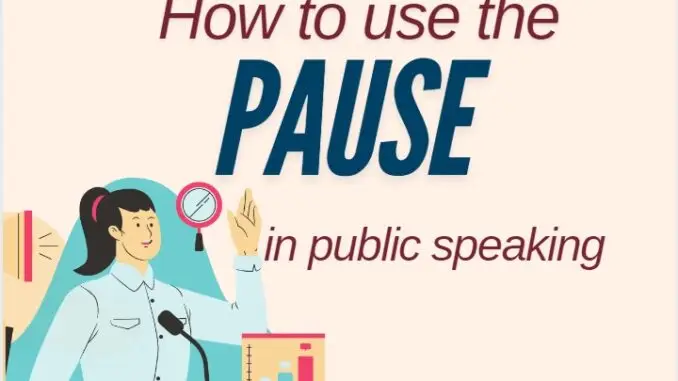
Using pauses effectively when speaking in public is a powerful technique that can enhance your delivery and help engage your audience. Here’s how you can use pauses to your advantage:
1. Create Emphasis
- When to pause: After making a key point or delivering a strong statement.
- How it works: A pause allows the audience time to absorb the information and gives it more weight. For example, after saying, “The future of our world depends on the choices we make today,” pause for a few seconds to let that sink in.
2. Pace Your Speech
- When to pause: After important phrases or when transitioning between ideas.
- How it works: Pausing naturally slows down the pace, making your speech more deliberate and easier to follow. Avoid rushing through your words, especially when explaining complex topics.
3. Control Nerves
- When to pause: During moments of uncertainty or nervousness.
- How it works: If you’re feeling nervous or need to gather your thoughts, a pause can help you regain composure. A brief silence feels less awkward to the audience than stumbling over your words.
4. Increase Audience Engagement
- When to pause: Right before or after asking a question or inviting feedback.
- How it works: Pausing after a question gives the audience time to reflect or respond, making them feel more involved in the presentation.
5. Allow for Dramatic Effect
- When to pause: Right before or after delivering a powerful statement or making a big revelation.
- How it works: A well-timed pause can create a dramatic effect, making your audience hang on to every word. It builds anticipation and heightens the impact of what comes next.
6. Transition Between Topics
- When to pause: After concluding one idea and moving to the next.
- How it works: A pause helps signal a shift in the conversation, providing clarity and allowing the audience to transition mentally to the new topic.
7. Break the Monotony
- When to pause: Regularly throughout your speech.
- How it works: Pausing adds variety to your speech rhythm, keeping your audience attentive and breaking up any monotony.
8. Establish Authority and Confidence
- When to pause: Before responding to questions or when making an important declaration.
- How it works: Pausing before answering questions or making points gives the impression that you are thoughtful and confident. It shows you are in control and can take time to think carefully.
9. Make Your Words Count
- When to pause: After every key phrase or sentence.
- How it works: Giving time for each sentence to settle makes each one seem more deliberate and meaningful. It also gives your audience time to process what you’ve said.
Practical Tips for Pausing:
- Don’t Overdo It: Pauses should feel natural, not forced. Too many pauses can disrupt the flow.
- Use Pauses for Breathing: When you pause, you can also catch your breath, helping to maintain a steady, calm pace.
- Mind the Length: A pause of 1-3 seconds is generally enough to have a strong impact without losing the audience’s attention.
- Practice: Record yourself speaking and listen for natural pauses. Practice pausing at the right moments to improve your delivery.
By strategically incorporating pauses, you can make your speech more engaging, impactful, and memorable for your audience.
Head over to Toastmasters for more public speaking tips – and Contact us if you would like to join Chester Speaking Club

Be the first to comment